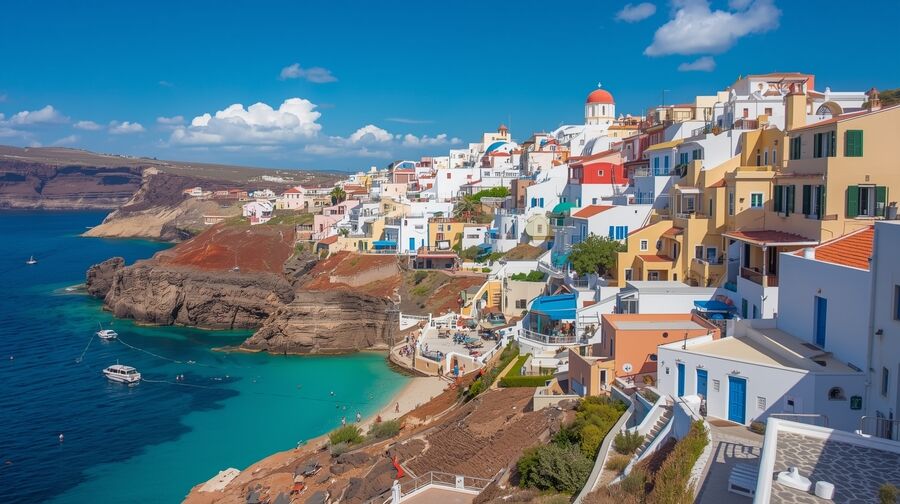Published on
September 22, 2025
Greece, Croatia, and Austria’s overcrowded tourist destinations, like Zakynthos and Lanzarote, are feeling the strain of unprecedented visitor numbers. This surge in tourism has been fueled by the rising popularity of these regions, driven by their stunning landscapes, historical significance, and vibrant cultures. However, the sheer volume of tourists is now outpacing the capacity of local infrastructure, causing traffic congestion, rising costs, and overwhelming public services. For many residents, the influx of visitors has led to a decrease in quality of life, with local businesses increasingly catering to tourists at the expense of the community’s needs. As a result, these once peaceful destinations are becoming overcrowded, and their charm is being overshadowed by the challenges that mass tourism brings.
According to the latest research from Which?, the Greek island of Zakynthos, also known as Zante, is Europe’s most overcrowded tourist destination. Situated in the Ionian Sea, Zakynthos is famous for its breathtaking beaches, dramatic limestone cliffs, lively nightlife, and reasonably priced resorts. These factors make the island a favorite among travelers seeking a relaxing yet fun getaway. However, its growing popularity has come at a cost, as the number of tourists visiting each year has skyrocketed, turning what was once a serene escape into a bustling and overcrowded destination.
In 2023, Zakynthos welcomed nearly six million overnight visitors, which is staggering given that the island’s population is only around 40,000. This results in a remarkable ratio of 150 tourists for every local resident. Although it does not hold the record for the most visitors in total, the island’s overwhelming visitor-to-resident ratio has earned it the title of Europe’s most overcrowded destination. The surge in tourists has put tremendous pressure on local infrastructure, public services, and daily life. Local businesses increasingly cater to tourists, leaving fewer options for the residents who once enjoyed a more balanced way of life.
Zakynthos is not the only destination in Europe grappling with the challenges of overtourism. The study compared the number of tourists in various regions with the size of their local populations, revealing a number of other hotspots facing similar issues. Among these are several islands in Greece, as well as popular Spanish and Croatian destinations. The report paints a picture of an unsustainable tourism model in which the number of visitors far exceeds the capacity of these areas to manage them.
Here are the most overcrowded destinations across Europe based on the report:
Zakynthos/Zante (Greece)Istarska Zupanija (Croatia)Fuerteventura (Canary Islands)Lanzarote (Canary Islands)Dodecanese Islands (Greece) – including Kalymnos, Karpathos, Kos, and RhodesTiroler Oberland (Austria)Pinzgau-Pongau (Austria)Cyclades Islands (Greece) – including Mykonos, Santorini, and NaxosCorfu (Greece)Außerfern (Austria)
These destinations are all experiencing the negative effects of excessive tourism, including rising accommodation costs, increased traffic, and overloaded public services. For residents, the presence of so many visitors often creates a sense of disruption and diminishes the quality of life. Local communities are finding it harder to balance the economic benefits of tourism with the long-term sustainability of their way of life.
The rapid growth of tourism in these areas has sparked calls for better regulation and management of tourist numbers. While tourism is undoubtedly an important part of these regions’ economies, local residents and business owners are increasingly advocating for solutions that would help distribute tourists more evenly, alleviate pressure on key infrastructure, and ensure that local cultures and communities are not overwhelmed by mass tourism.
For those planning to visit Europe in the coming years, it’s wise to consider destinations that are less affected by overtourism. While the allure of famous spots like Zakynthos and Mykonos is undeniable, there are many hidden gems across the continent that offer a similar charm without the overwhelming crowds. By choosing to explore lesser-known regions, travelers can enjoy a more relaxed and authentic experience while also helping to ease the burden on the most crowded destinations.
Greece, Croatia, and Austria’s overcrowded tourist destinations, like Zakynthos and Lanzarote, are struggling with an overwhelming surge in visitors, putting a strain on local infrastructure, driving up costs, and affecting the quality of life for residents. This unprecedented influx is outpacing the capacity of these popular spots to manage the growing crowds.
In conclusion, overtourism is a growing issue that needs to be addressed if Europe’s most beloved destinations are to remain viable for future generations. By becoming more mindful of where and how we travel, both locals and tourists can work together to ensure that tourism remains a positive force, benefiting both the economy and the people who call these beautiful places home.
